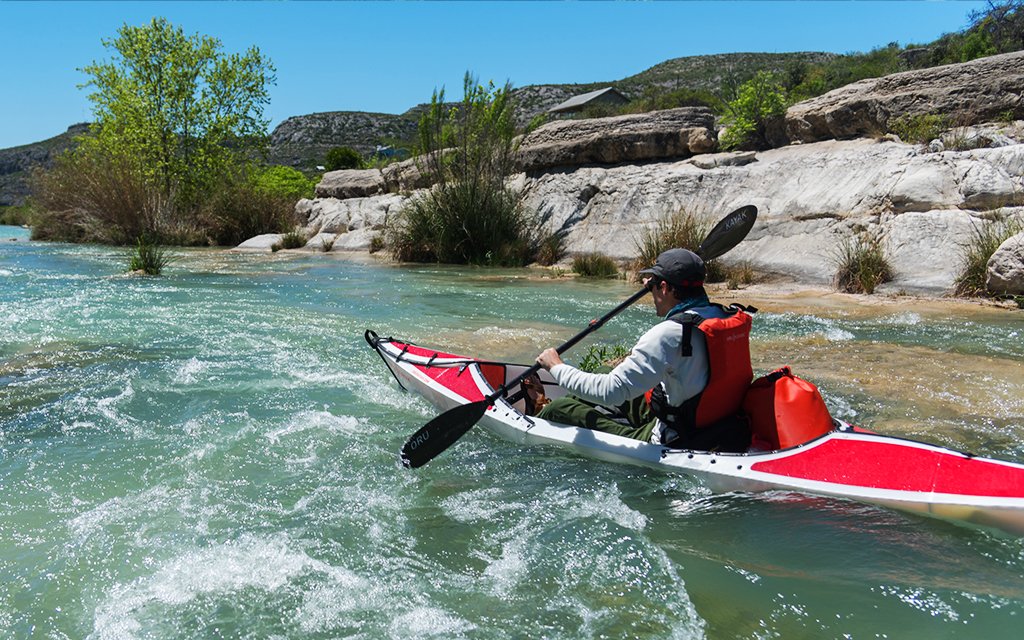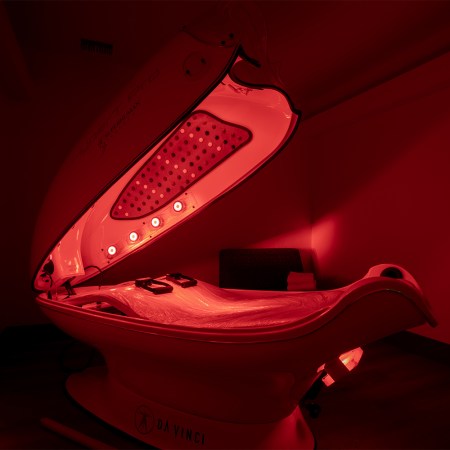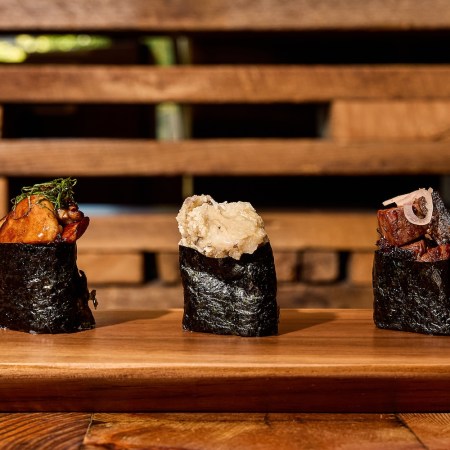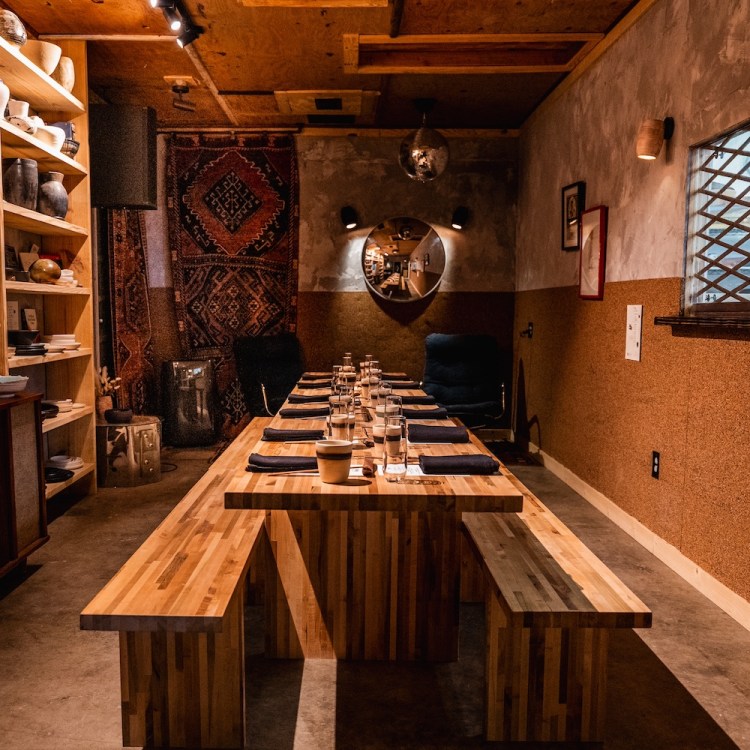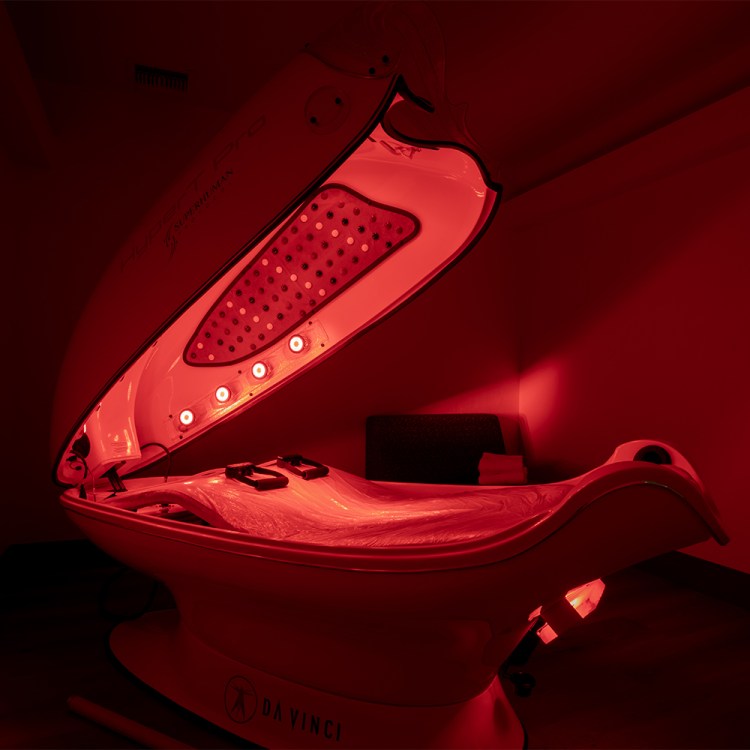“You’re going on the Devils — in that?” asked the Texas river guide.
He was referencing our choice of watercraft, which at that time was folded down to the size of a card table. His concerned look and tone of voice perked our ears, but having grown up in the South, I chalked it up to the compulsory leg-pulling antics of a good ol’ boy woodsman. He then proceeded to explain that we weren’t headed for a leisurely float and some fly fishing. There were rattlesnakes. There were technical rapids. There were Texans with itchy trigger fingers.
The Devils River is 94 miles of harsh terrain just north of Del Rio, in Sutton County. It flows southwest until it reaches the Rio Grande, and from there the Gulf of Mexico. Was I really about to ford 47 miles of it in a boat made from the same polyurethane they use for those mail crates at the Post Office?
Yes, we were. And yes, the Devils lived up to his billing. Because it’s buttressed by private land, you can only exit the river at certain locations or in an emergency — we passed one sign that said, “Keep paddling, we’re tuning our banjos.” But it was also a stunning place, with some of the freshest aquamarine water in America.
We were there for a two-day float to test Oru Kayak’s Beach LT. At 12 feet long and 28 inches wide, the collapsible one-man boats handled the river much better than expected. The Devils had a lot of different terrain: some Class II rapids, a giant waterfall that required portage, plenty of deep channels and swirling eddies.
Prior to launch, the kayak took less than five minutes to snap together. Our biggest complaint? Probably the open cockpit, which has a tendency to take on a lot of water when the going gets tough. The neoprene handles on the ends are easy to remove, though, so we were able to tip the water out when things got too sloshy.
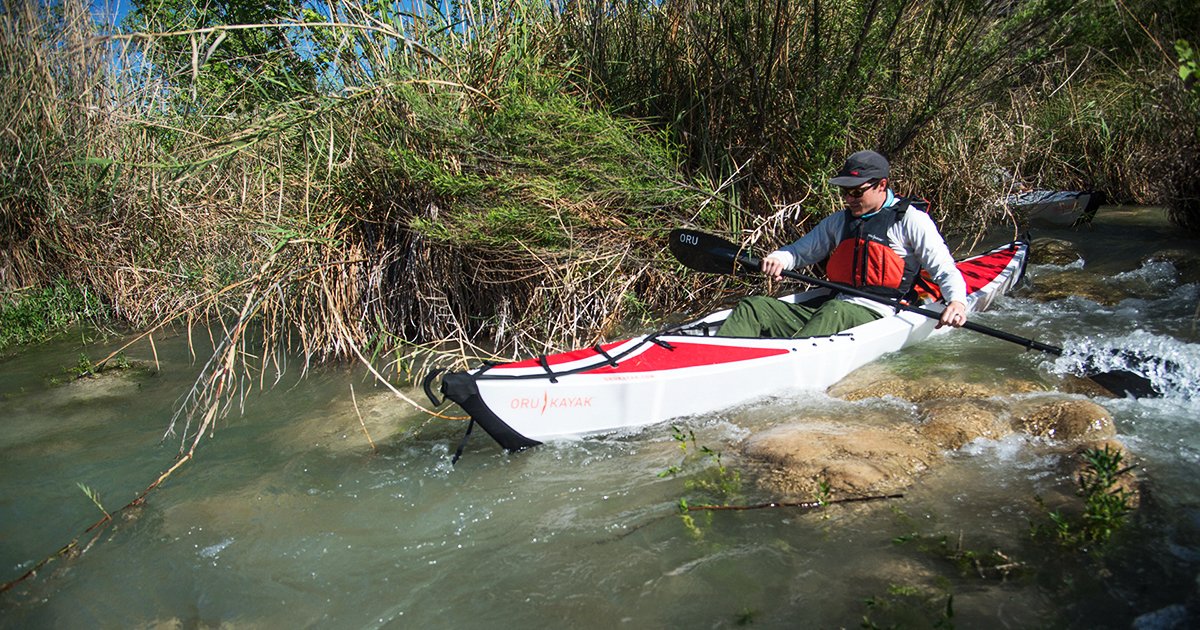
The kayaks, despite being rudderless, handled gusts of wind that regularly exceeded 40 miles per hour wind with aplomb. We paddled for nine to 10 hours a day, and the foam seats were as comfy as you’ll find in any kayak. We kept all our gear — tents, clothes, food, stoves — securely in the bulkheads, which are maintained by a plastic board that needed occasional repositioning.
At the end of each day, we didn’t just beach our kayaks — we folded them, stowing our paddles inside after quickly disassembling them, basically like you would a tent pole. And this is the real beauty of an Oru: once the kayak is folded, you can throw it on your shoulder with backpack straps. From there, it’s easy to transport it deeper into the woods … or onto a plane, if you’re seeking international waters. You’ll need to check it, and when you do, just tell the agent it’s marketing materials — they’ll balk if you say it’s a boat.
Would this boat hold up on a stronger river? That’s not something we’re keen to find out. But we will be using ours to explore waters all over America this summer.
A trip back to the Devils wouldn’t hurt, either.
This article was featured in the InsideHook newsletter. Sign up now.
